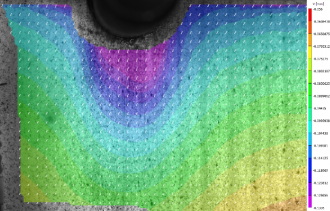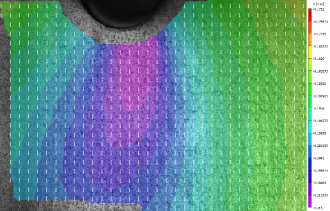A stronger connection
A mechanical reinforcement treatment of wood by impregnation of acrylates in the connector member
The wood-frame construction is gaining interest here and around the world for its ecological benefits and its aesthetic appearance. Wood building technologies are constantly evolving to improve the stability and strength needed for increasingly taller buildings, such as this student residence at the University of British-Colombia.
However, as the size of buildings increases, the creation of fasteners becomes a limiting factor for structural design. To counter this effect, we tend to oversize the wood structure which can bring limitations in the architectural design.
In a study conducted within CIRCEB and CRMR research centre, a method was used to strengthen the critical points of a structure. This method involves impregnating the wood in the bolted joints of the glulam to increase the performance of the beams and lengthen the spans. The tests were carried out on black spruce, Picea Mariana, a species widely used for the manufacture of laminated timbers. A pressure-impregnation process using an acrylate resin and reinforcing agents was used to create a material with superior mechanical properties. The study was done on different bolt sizes, and it was observed that the treatment had a greater impact as the diameter of the connector decreased. Thus, for 16, 13 and 10 mm bolts, the mechanical strength increases by 48, 65 and 79% respectively (Lafond, Blanchet, Galimard, Landry, & Ménard, 2017).
Figure 1 shows the displacement fields for black spruce samples with and without reinforcement treatment. Without treatment, the wood tends to suffer a brittle fracture due to cracks occurring directly beneath the loading zone. Indeed, displacements are highly concentrated in the vertical direction. Following the treatment, the displacements and stresses are distributed with a lateral component around the bolt. The treatment thus makes it possible to standardize the distribution of the stresses and favors a ductility for a safe rupture of the assembly.
 Traité  Non-traité |
Fig. 1. Strain field of untreated and treated black spruce during the dowel-bearing test at 25 MPa measured by digital image correlation (2D-DIC).
Lafond, C., Blanchet, P., Galimard, P., Landry, V., & Ménard, S. (2017). Impact of a reinforcement treatment with acrylate impregnation on the mechanical behavior of black spruce as connector member. Construction and Building Materials, 141, 517–525. https://doi.org/10.1016/j.conbuildmat.2017.03.028

